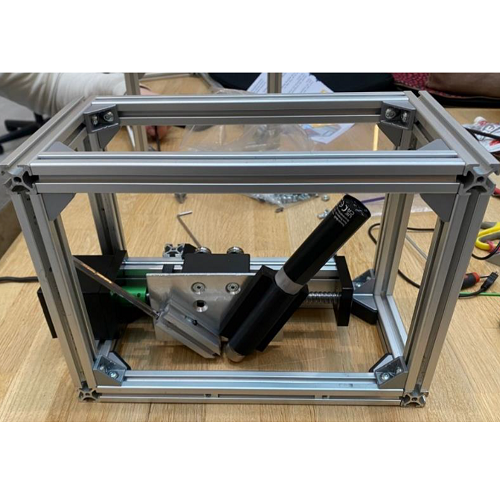In the current global landscape, plastic waste has emerged as a pressing concern, prompting concerted efforts by enterprises and governments to develop recycling processes. Despite these efforts, challenges persist, as some plastics remain non-recyclable, and others are often downcycled due to various constraints. To combat this issue, there is a growing need to enhance the recycling chain to minimize downcycling. Vink Plastics, in collaboration with the Circular Plastic Factory (CPF), has pioneered a circular supply chain model for their products, wherein end users actively engage in plastic sorting at the source. Vink Plastics then delivers these sorted plastics to CPF, where they are transformed into their original product forms.
Project description
The primary challenge lies in detecting the anti-scratch coating on polycarbonate sheets, crucial for effective recycling. The main objective is to develop an industrialized, semi-automatic prototype capable of identifying the presence of the anti-scratch layer. The anticipated outcome involves the development of one or two prototypes capable of discerning between different polycarbonate samples. Extensive research will be undertaken to pinpoint the most effective detection methods, encompassing optical techniques and acoustic analysis of the scratches.
Scratch-test results
The mechanical component of the prototype has proven to be effective, offering stability and consistency in its performance. The Python code, deployed on the Raspberry Pi, successfully drives, and controls the prototype. However, a significant obstacle arises from the environmental noise, such as the motor sound emanating from the prototype itself or external factors from the environment. This ambient noise currently poses a challenge, preventing the prototype from accurately detecting the specific polycarbonate being scratched.
Optical test results
Our experiments showed the complexity of distinguishing between coated and uncoated polycarbonate materials during the recycling process, prompting for exploration of various optical methods. While Fourier-transform infrared (FTIR) spectroscopy offers detailed insights into chemical bonds and functional groups, its high implementation cost and time-consuming nature pose practical challenges for the Circular Plastics Factory (CPF). Raman spectroscopy, though non-destructive and requiring minimal sample preparation, faces obstacles in detecting thin anti-scratch layers and safety concerns related to laser usage.
By eliminating less effective approaches, the project identified simple and efficient methods for distinguishing between different samples. Consequently, it recommends further exploration of transmission/absorption tests to optimize efficiency and reliability while minimizing cost.
Video
Acknowledgements
As a student team of five students, from different technical educations, we would like to acknowledge several organisations and people. Ocean Optics deserves recognition for their assistance in the optics test, enhancing the quality of the research. The expertise of the Ocean Optics team was crucial in navigating the complexities of optical testing. The Applied Physics lab at the Fontys Nexus building also deserves acknowledgment for their contribution, providing materials and facilities that facilitated the experimental aspects of the research.
Appreciation goes to our client, Vink Plastics, for their valuable assistance in challenging industrial environments, particularly within the warehouse. Their expertise and dedication to precision were instrumental in obtaining reliable data.
